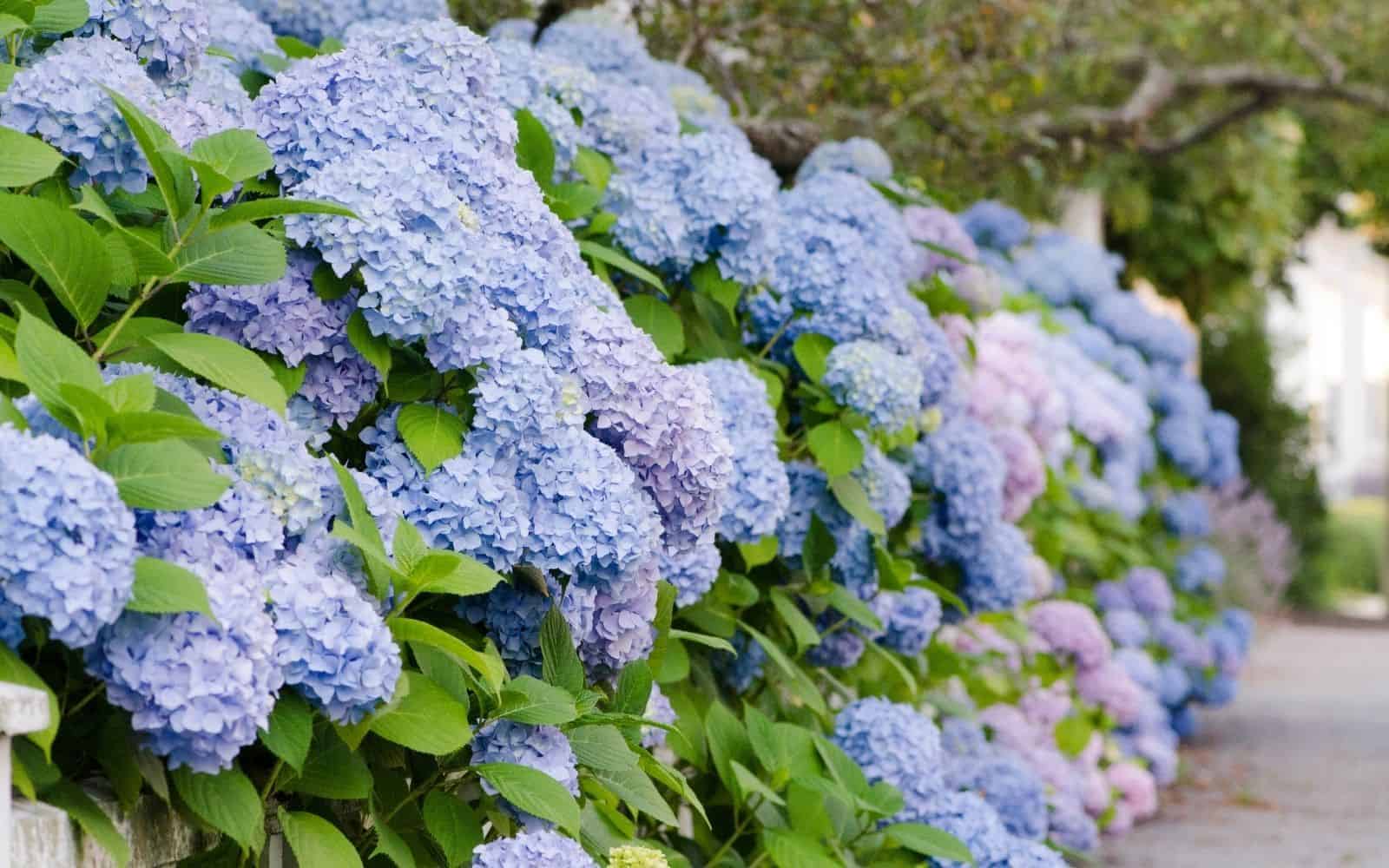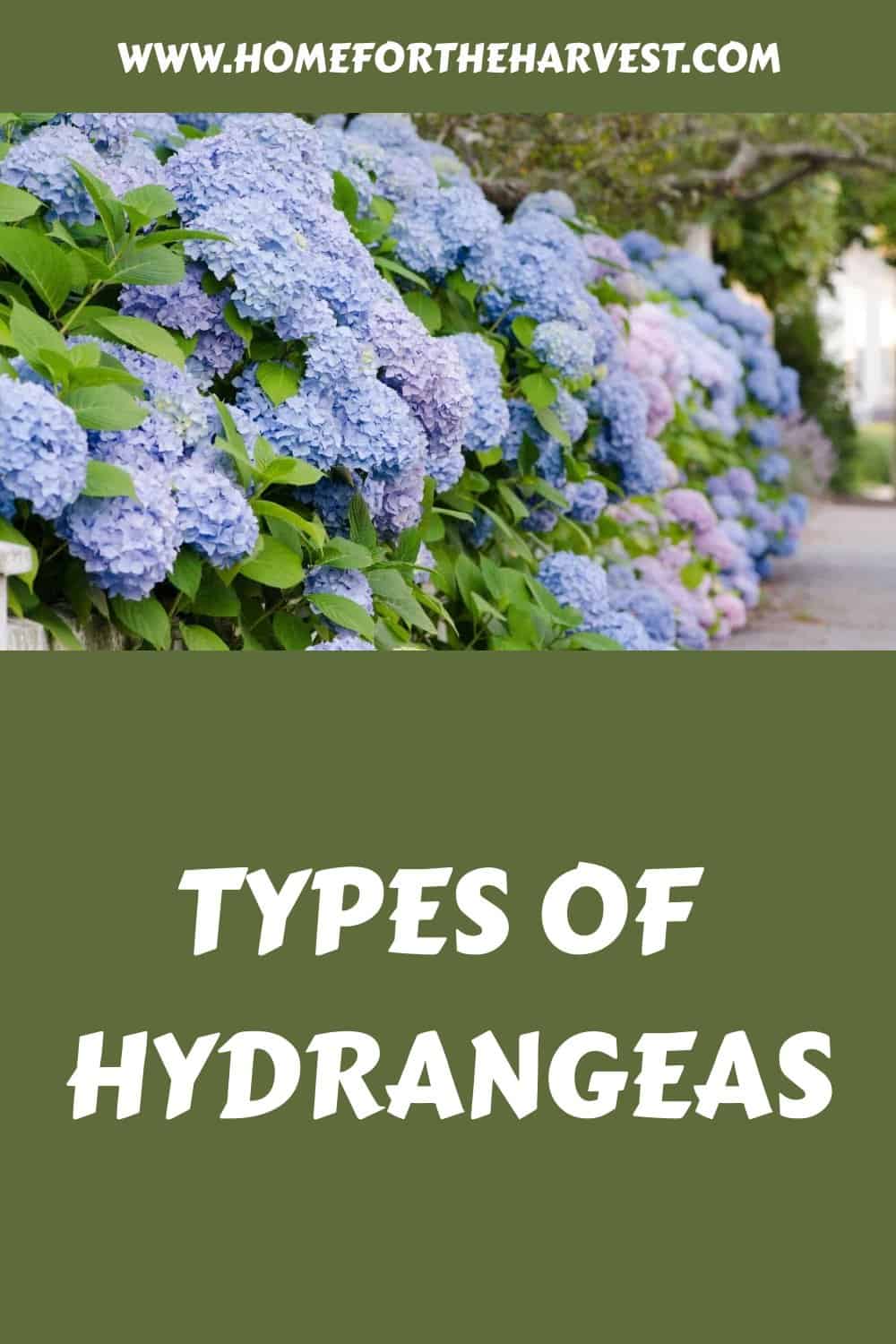There are six common types of hydrangeas: bigleaf, smooth, panicle, oakleaf, mountain, and climbing hydrangeas. These deciduous plants are mainly cultivated as shrubs (with the exception of climbing hydrangeas), but some are also offered for sale as small trees. With some variance between the types, hydrangeas normally like some shade, grow between 3 to 6 feet, and most frequently produce blooms in pink, red, blue, purple, white, and cream.
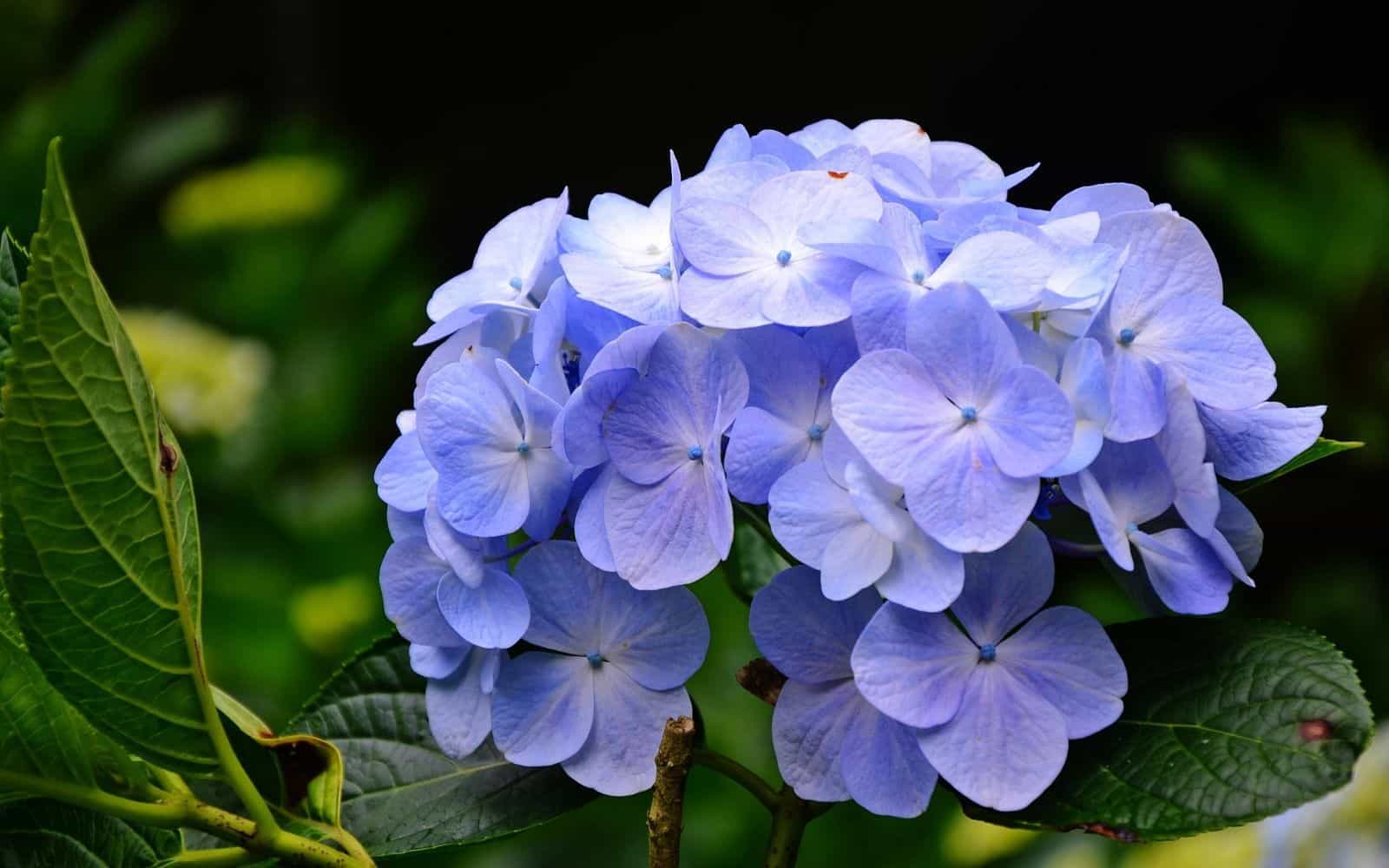
1. Bigleaf hydrangea (Hydrangea macrophylla)
Bigleaf hydrangea (Hydrangea macrophylla) is a deciduous shrub native to Japan known for its giant rounded clusters of colorful flowers. Bigleaf hydrangea plants will grow from three to six feet tall and span six to ten feet wide. Some popular varieties include Endless Summer hydrangea, Nikko Blue hHydrangea, Summer Crush hydrangea, and BloomStruck hydrangea.
Bigleaf Hydrangea generally requires only quick and simple maintenance, which is a bonus to gardeners. Unlike some of the other hydrangea varieties, the Bigleaf Hydrangea can handle other soils, such as clay soil, as long as it has adequate nutrients for the plant. The soil should also have good drainage and be somewhat moist and wet.
Fertilizing and applying organic mulch can be a helpful addition to the soil to encourage optimal growth and blossoming. Also, it will love being planted in a spot with some afternoon shade to combat the sun and heat intensity, and it can withstand some winter frost. Pruning should occur as the flowers are starting to die down in the latter part of summer. Avoid winter or spring pruning, as this removes the next spring’s flower buds.
As the name suggests, Bigleaf Hydrangea leaves are large and beautiful. The pretty flowers bloom in late spring or early summer (and some varieties rebloom in late summer). The flower color can be blue, red, white, purple, or pink. When initially blooming, it will likely start out as either blue, pink, or somewhere in the middle, depending on the soil’s alkalinity. Adding sulfur can change the color from pink to blue, and adding lime turns it from blue to pink.
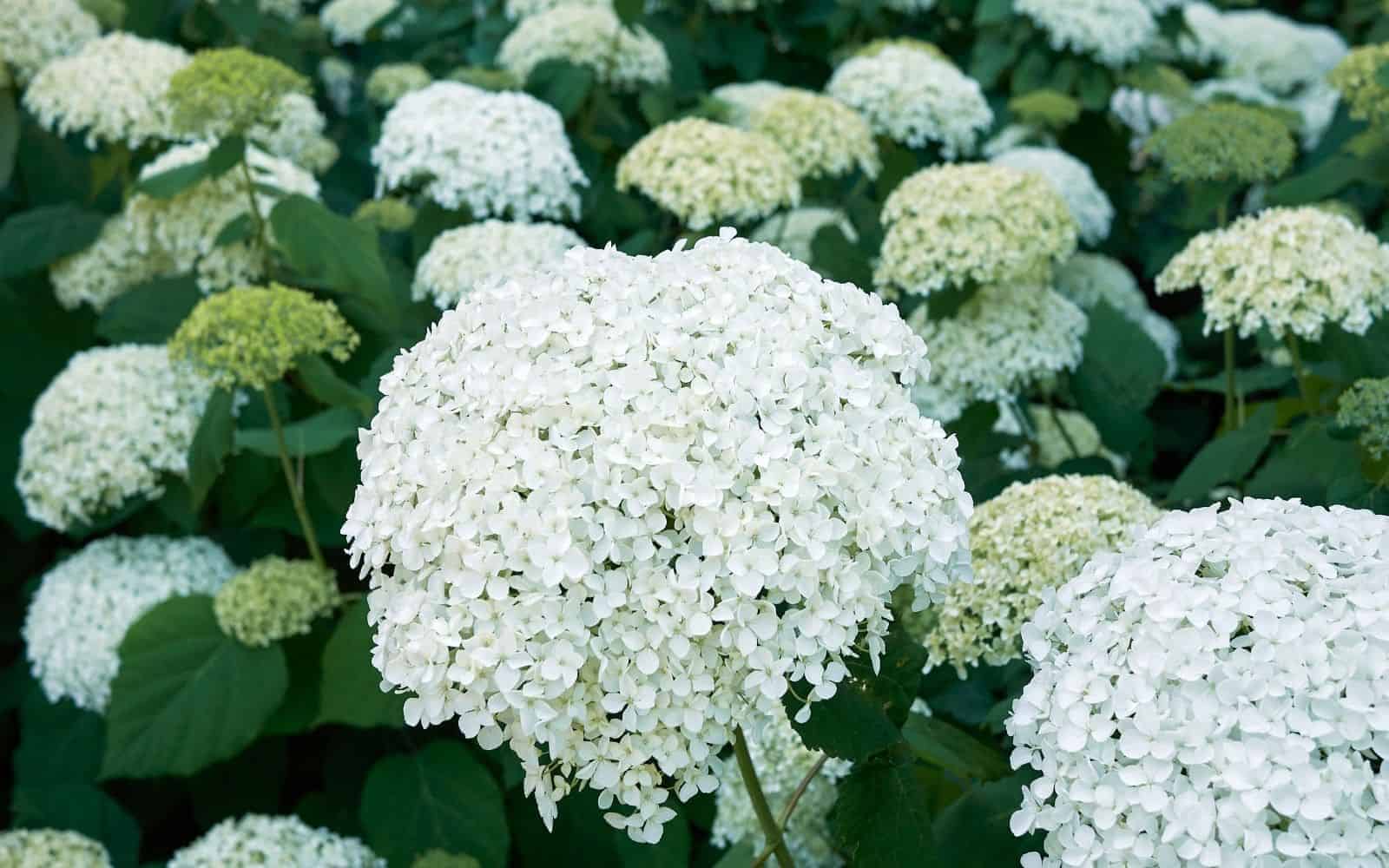
2. Smooth hydrangea (Hydrangea arborescens)
Smooth hydrangea, also called wild hydrangea, is a USA-native plant known for its large rounded clusters of white blooms. This deciduous shrub will quickly reach a width of three to five feet and a height of three to six feet (occasionally 10 feet) tall, making it pretty evenly proportioned most of the time. Some popular types of Smooth hydrangea include Annabelle hydrangea, Incrediball hydrangea, and Invincibelle hydrangeas.
Smooth hydrangea can be grown in most climates in the United States other than parts of the West Coast and some of the furthest south areas such as southern Texas, southern Florida, and the bottom part of Louisiana. It is most commonly seen in the East, particularly in New York, Oklahoma, Louisiana, Iowa, Missouri, and Florida.
A smooth hydrangea should receive at least four to six hours of sun. More than six might be necessary for some circumstances. It can have partial shade or full sun for it to thrive the most, but the more sun it has, the more moist the soil will need to be.
Regardless of how much sun it gets and how drought-tolerant it can be, the soils should still have efficient drainage and be rich. Soils such as clay, sand, or loam soil are good for smooth hydrangea. It likes to have shade during the day, requires a normal watering frequency, and only needs quick, easy maintenance. If you want to prune the plant, do so in late winter.
The flowers are an especially prominent feature of this form of hydrangea since they are big in size and last for several months. Smooth Hydrangeas bloom on new wood, and the resulting flowers are usually white, which contrasts well with the varying degrees of green in the foliage. As for the seed capsules, those reach their prime in the fall months of September and October.
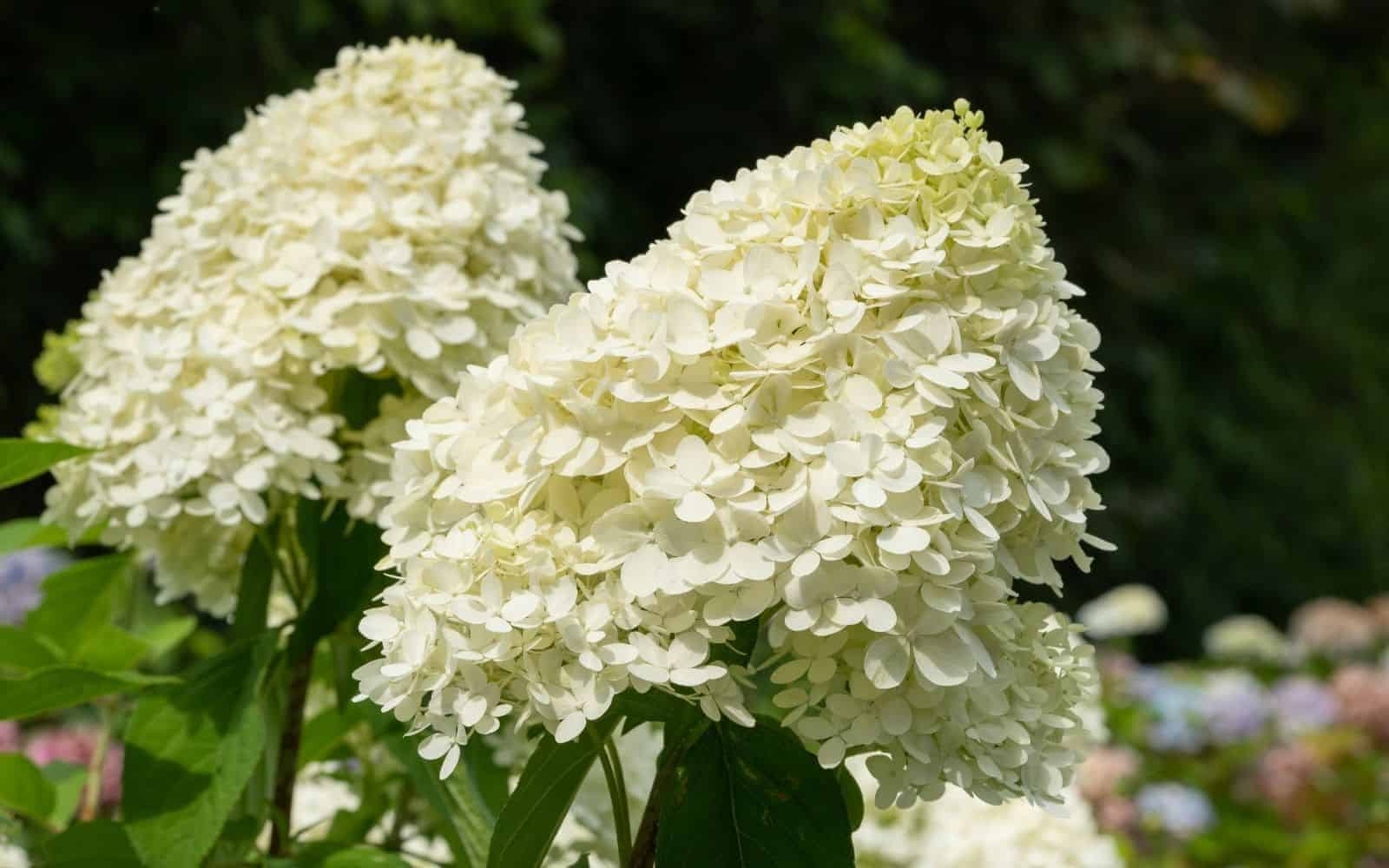
3. Panicle hydrangea (Hydrangea paniculata)
Panicle hydrangea (Hydrangea paniculata) is a type of hydrangea native to Asia known for its conical flower clusters and its incredible tolerance to cold temperatures. They are among the least susceptible hydrangeas to the bitter winter cold. Some popular types of Panicle Hydrangea include Limelight hydrangea, Little Lime hydrangea, Quick Fire hydrangea, Vanilla Strawberry hydrangea, and Bobo hydrangea.
Panicle hydrangeas are the least demanding of the hydrangeas to grow, and they are also some of the most dependable. Like some of the other types previously mentioned, Panicle Hydrangeas are pretty tough shrubs and can survive in climates within the 3-8 or 9 hardiness zones. This covers basically everywhere that isn’t far south or on the west coast.
Out of all of the hydrangea types, panicles respond to the sun the best, even though they can handle colder weather. In the winter months, ensure they get at least a minimum of four to six hours of sunlight. As for hotter areas, a bit of afternoon shade in the summer months will be incredibly beneficial. It can also tolerate just about any soil as long as it has efficient drainage.
Water two to three times a week once the plant is settled. After a year or so, prune once at the end of fall, mulch with shredded hardwood, and fertilize using a rose fertilizer or another similar option at the beginning of spring. That will bring the best growth and flowering results.
Panicle Hydrangeas bloom in the summer (particularly mid-summer), and when they do, the flowers are both large and pretty! Oftentimes, they blossom in the shape of a football. Initially, the flowers will be white, but they will gradually turn into various tones and depths of red and pink. They might even have more than one color at a time.
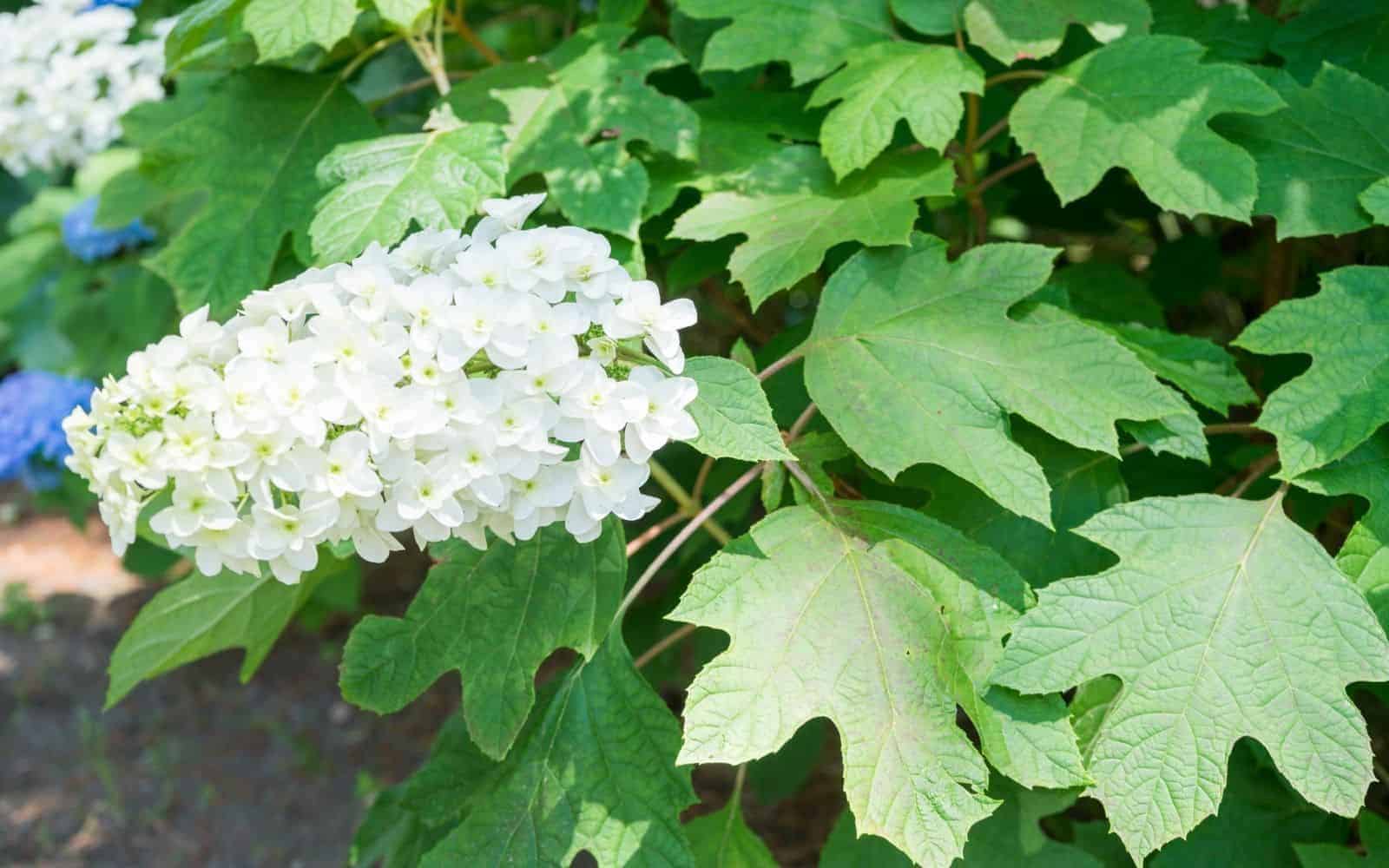
4. Oakleaf hydrangea (Hydrangea quercifolia)
The Oakleaf hydrangea is a deciduous shrub that originated in the southeastern USA. Oakleaf Hydrangeas are known for their slender flower clusters and even more so for their oak-like foliage. Some popular types of Oakleaf Hydrangea include Ruby Slippers hydrangea, Alice Oakleaf hydrangea, and Gatsby Moon hydrangea.
It can grow in the conditions of Zone 5 through Zone 9, which covers the majority of the United States. The only areas not in those zones are the northern parts of the furthest north states, such as Montana, North Dakota, Maine, Wisconsin, and Michigan.
It is commonly found in humid areas of the southern states, particularly the southeast quarter of the United States, including North Carolina, Georgia, Florida, and Louisiana. It grows to be quite large, and it is pretty evenly proportioned. It develops to be around six to eight feet tall (sometimes up to ten feet) and approximately six to eight feet wide when grown in the right conditions.
Oakleaf hydrangea likes either full sun or some shade. The warmer the climate, the more the amount of necessary shade increases. It usually only needs an average amount of water, no matter the climate. It likes the soil to be moist and wet with adequate drainage.
The soil should also be nutrient-dense for it to thrive best, and the right mulch can help the ground to be moist and rich for the hydrangea. If it is felt that the plant should be pruned, prune it slightly as it is first starting to have its flowers bloom.
As for the flowers and blooming, the oakleaf hydrangea usually has its blooming season from the month of May through July. The texture of this hydrangea variety closely resembles an oak tree, which is how it got its name.
The flowers are initially white when they bloom, but they become purple, pink, orange, bronze, or even red later on in their blooming season. The flowers also group together in a cone shape. In fact, it is particularly known for its color contrast between the dark, deep green leaves and the white flowers. The flowers have a captivating appearance and are beautiful when cut, so sometimes people will dry the flowers so they can keep them.
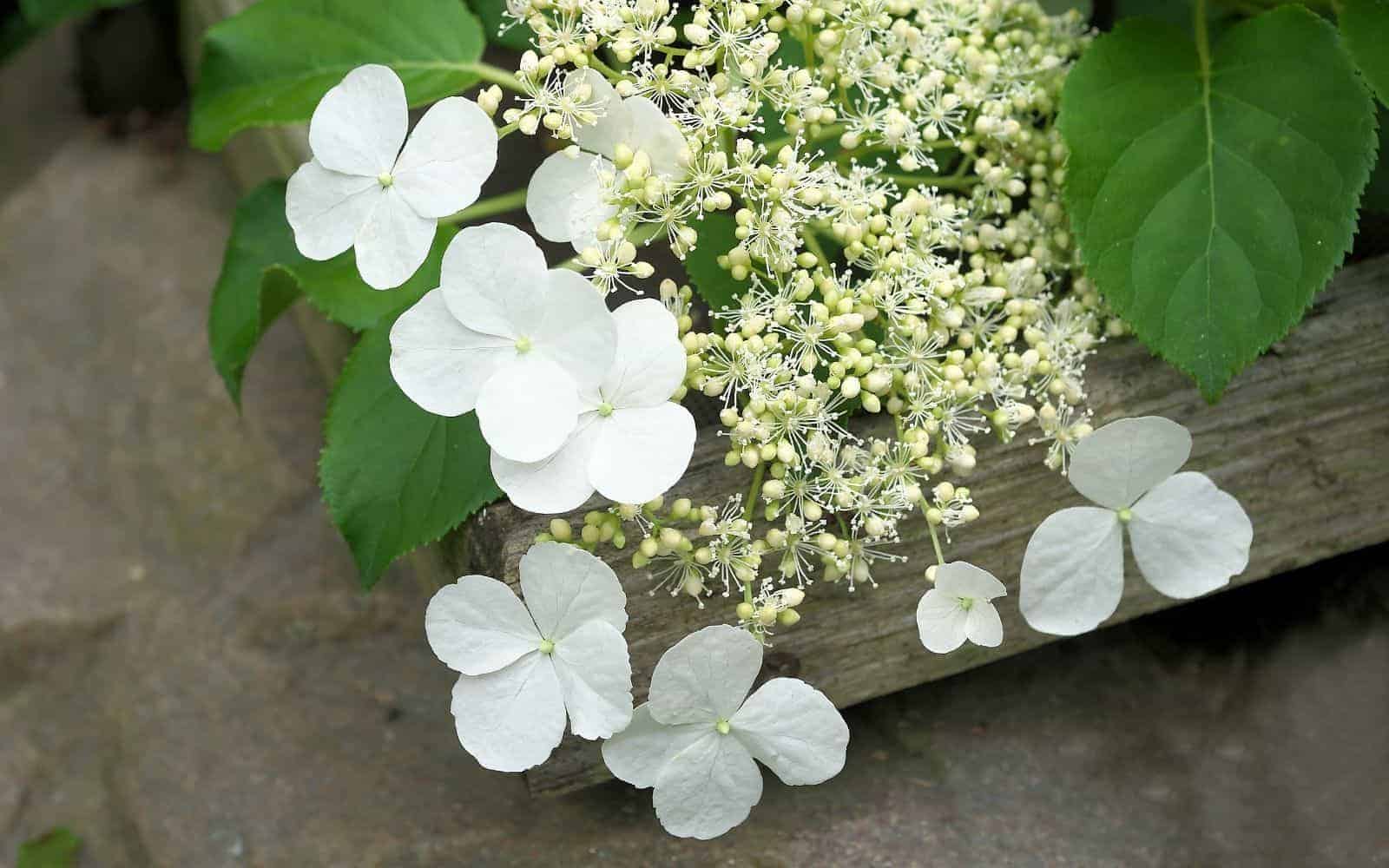
5. Climbing hydrangea (Hydrangea anomala subsp. petiolaris)
Climbing hydrangea (Hydrangea anomala subsp. petiolaris) is a woody vine hydrangea native to Asia, including the Himalayas, Siberia, Taiwan, Japan, South Korea, China, and Sakhalin. Climbing hydrangeas are one of the rare vine types of hydrangea (most hydrangeas naturally form rounded shrubs). The most commonly grown variety is the classic white climbing hydrangea.
This type of hydrangea is a vine that grows quickly and can reach anywhere from thirty to fifty feet in height (sometimes even eighty feet) and three to five feet in width. It survives in zones 4 through 8, so the climbing hydrangea can grow almost anywhere in our country. It just doesn’t do well in the farthest south areas, such as southern Florida or some parts of the northern states.
Fertilize the plant once (possibly a second time a couple of months later) and get rid of any dead wood at the beginning of the spring season so it will blossom well. To keep the flowers in the best shape, prune them once in the middle of the blossoming season. It is pretty hardy as it can withstand heavy shade or even drought. Similarly, it will do well in a spot that receives full sun, but it usually has to have especially good, nutrient-rich, moist soil for that. It also grows well with some afternoon shade, so it is best to face it in an eastern or northern direction.
It even does well in winter, and it can sometimes provide a burst of color during that season. With an average water intake (a couple of times a week, depending on the temperature) and relatively easy maintenance, it is pretty laid back in terms of upkeep. Most often, it is used as a ground cover, decoration on a fence and wall, or in other similar ways.
Blooming lasts from the end of spring (so around May) through the bulk of the summer (typically through July). The flowers bloom normally in May and June, and they can be cream, white, green, or yellow in color. It also produces fruit that hits its prime in earlier fall, primarily September and October.
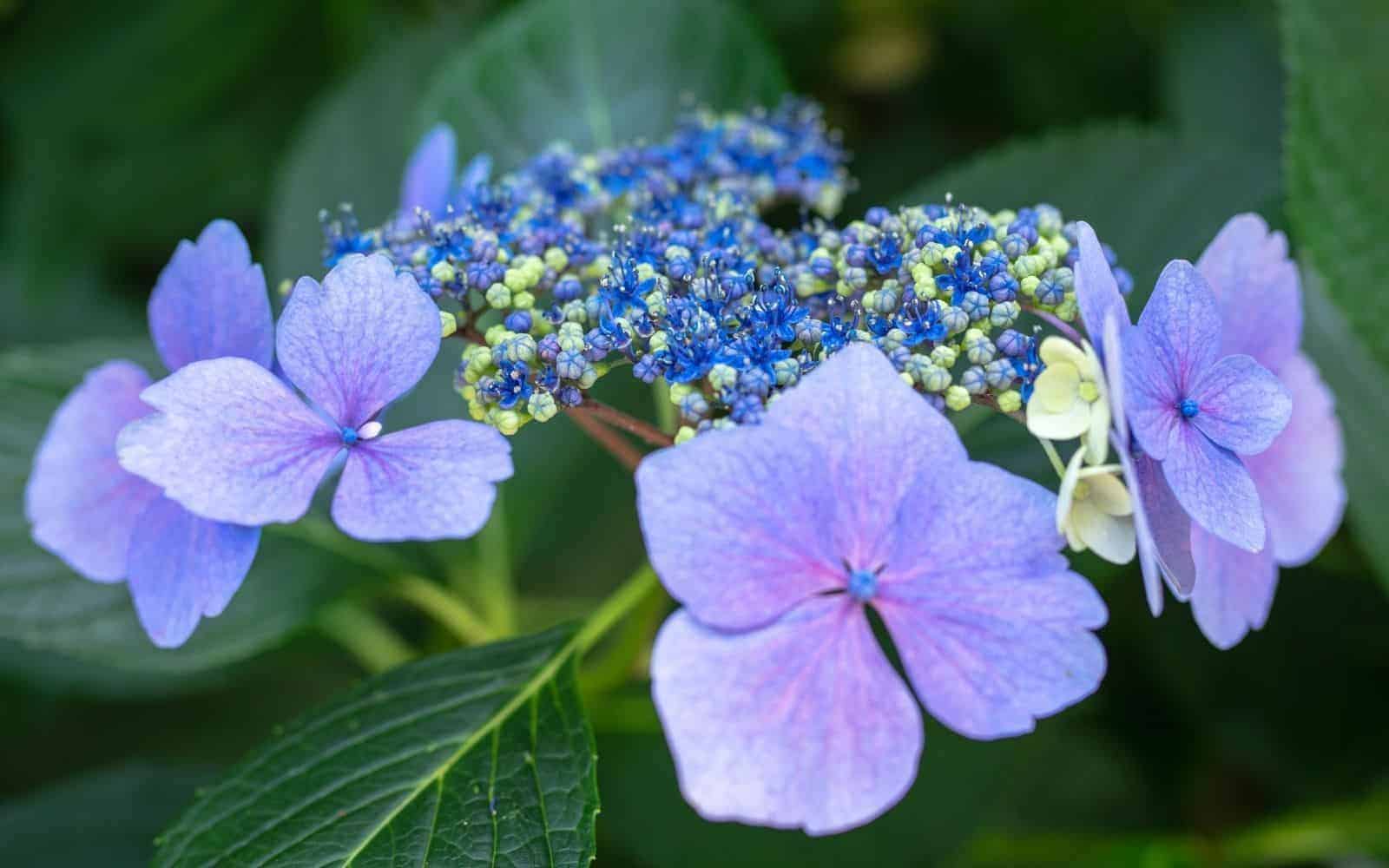
6. Mountain hydrangea (Hydrangea serrata)
Mountain hydrangea originated in Japan and Korea. It is pretty evenly proportioned, growing to a small mature size of around 2-4 feet wide and tall. The most popular Mountain Hydrangea is the Tuff Stuff hydrangea.
While they far prefer the warmth and are fairly susceptible to harsher cold weather, Mountain Hydrangeas like to have some afternoon shade (4 to 6 hours of sun at the most) when the weather gets hotter, and they are pretty normal in regards to watering frequency. They like some moisture, good drainage, and rich nutrition when it comes to soil. Prune as the seasons move from winter to spring. Overall, the care and maintenance are pretty easy to keep up with.
Something that can be pretty handy is that Mountain Hydrangeas can blossom on both new wood and old wood. They bloom typically from June through August, and the type of soil determines the color that the flowers will be.
The colors will initially be blue, pink, or lavender and can sometimes end up being white. The color pink will appear if the soil is more dominantly alkaline, the color blue will result if the soil is more acidic, and the color will be purple (more particularly lavender) when the alkaline and acidic levels are pretty even. The leaves on Mountain Hydrangeas are rich, deep green, and serrated on the edges.
